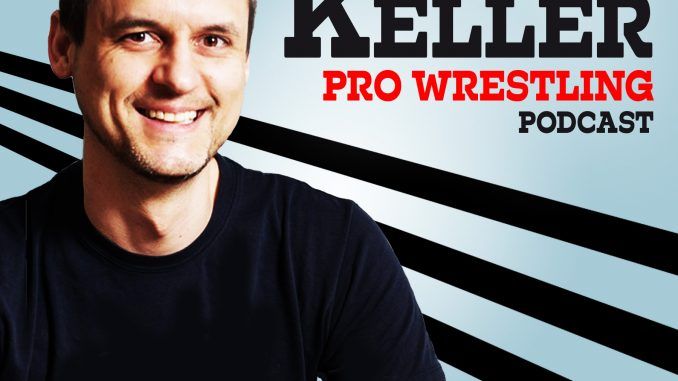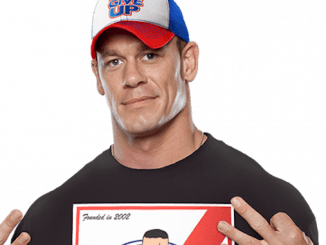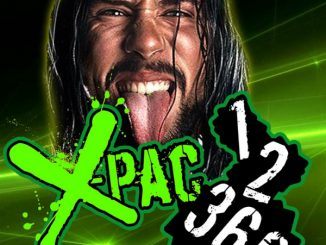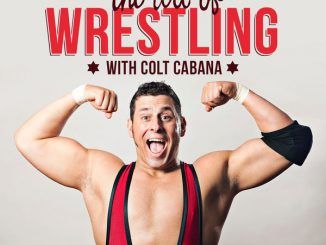
Wade Keller Pro Wrestling Podcast – Interview Friday
Release Date: November 17, 2017
Guest: “X-Pac” Sean Waltman
Recap by: Jason “Mr. Wheenus” Darling
DIRECT LINK TO LISTEN/DOWNLOAD
Newsworthy Items:
- Sean’s favorite performer right now is Kazuchika Okada.
- Sean just put out an interview on his podcast “X-Pac 123” with Billy Corgan.
- Sean still wrestles regularly, just had a match in the last two weeks.
- Wade says the injury rate in the NFL is “Cringe-worthy” seeing all-star athletes getting constantly hurt.
- Curt Hennig taught Sean that most of the business was honed after the show ended.
- Sean points out that while flat back bumps don’t hurt, they rattle the head and shouldn’t be considered safe.
- Both Sean and Wade agree with AJ Styles vs. John Cena being a great example of a safe match that still managed to be highly entertaining.
Recap –
Intro:
Wade met Sean Waltman back when Sean was 15 and going by “Lightning Kid.” Sean had worked in the independent scene in Minneapolis and came from Florida. Wade knew early on he was small and that it would be hard for him to make it, but he made it in WWF, originally performing as the “123 Kid.” He still wrestles to this day and has an upcoming tour of appearances in Australia.
This interview is enjoyed thoroughly by Wade because it is about the “WWF Style” and how it compares to others around the world. It was based on the context of what they were trying to tell as far a storyline, how often they were wrestling, and the audience they were in front of. They also talk about how that style has changed over the last 20 years and since Sean left. He talks about some of the subtle things in a match that the average wrestling fan probably wouldn’t know. They talk about Vince McMahon and the overall business now as well.
Interview Start:
Wade says he seems to have been interviewing Waltman forever, and Sean agrees. Wade wasn’t worried about prepping for this interview, he knows Sean so well that he would just be able to wing it. Both Sean and Wade reminisce about the past and how they were young breaking into their respective business. Wade had things written out word for word and Sean just needed to get comfortable in his skin.
Wrestler-hosted podcasts are part of an interesting evolution of the professional wrestling scene. Wade asks how Sean feels about this and being able to stay in the business by hosting his own show, X-Pac 1,2,360. As the interview gets underway, Sean’s dog starts digging into the trash and distracting him. Once that is settled he thinks back to all of the big names who have started doing podcasts like Colt Cabana, RVD, and Shane Helms. Sean had started doing shows in 2010 but it wasn’t considered a podcast per se, it was just an audio show. He enjoyed doing the shows, hosting, being interviewed, etc. He felt it was a natural fit for him as he was able to visualize it, much like wrestling. He says the coolest thing about this is to be able to go on another wrestlers podcast, or have someone on his and be able to not only do the show but also catch up.
Sean’s place in the wrestling business today:
Wade’s next question is about how Sean views and absorbs the wrestling industry in such a public way. Sean says he has a different way that he approaches broadcasting, on Twitter, he would just blurt out anything that came to mind. Now in the podcast world, he thinks things out and actually articulates his responses. Nothing that Sean says is gospel, what he talks about is just his opinion and take on the business. Sean says there is a responsibility to what he broadcasts and that it balances with his own reliability as a podcast host. Sean wants everyone to know what he is saying on his podcasts isn’t from a place of malice, it’s meant to be as honest and constructive as possible. It is always meant to build up and make someone better. Though he’s been critical of the WWE product, it’s not him being bitter.
Sean talks a bit about continuing to wrestle and feels he is having some of his best work right now. He is doing everything he can to protect himself, including his head. He wants to keep doing this as long as he can.
Taking Bumps and “WWE Style”:
Wade asks where Sean is as far as the mechanics of professional wrestling and protecting his head. Sean has had a lot of concussions, and that it is well-documented. He thinks WWE and the industry as a whole have come a long way in protecting guys and making sure they are taken care of. In his opinion, the way wrestlers are taking bumps has gotten way better over the years. Sean always thought when he took a bump it needed to be a back bump, which he didn’t like. Now, someone will get kicked and just kind of crumble and it works.
The “WWE Style” is something that the wrestlers in the company tried to create for safe working. Wade asks for Sean to comment on the theory of back bumps versus WWE style of wrestling and how it looks more dangerous now but is actually safer. Sean says the flat back bump doesn’t hurt and is why it was being done back in the day, but your head is still being rattled around. Trainers now are teaching young wrestlers to just run and bump over and over and to Sean it’s ruining bodies before they even start.
Today’s product is a “different evolution” of the WWE style, according to Sean. The wrestlers that are big stars now honed their craft outside of the WWE. They learned and came up with their own way outside of the company, and that isn’t a positive or a negative. Sean said it would be beneficial for those guys to integrate the WWE style into the way they work. The pacing of the match and placement of certain spots is where he is seeing a difference in the way things are being done now. (Wade appears to be working on trying to get a more detailed answer out of Sean) Sean goes off a bit in his own direction and talks about the pacing and how doing a tackle or clothesline in a match coming off the ropes, you tend to know where they are going next. He says if guys could change that up a bit it would work out better for them.
Wade attempts to bring things back on track. He said watching Bound for Glory the other weekend, that it was just a garbage fest. Most of the spots were done outside the ring and things were taking to long to develop and to Wade, it was just a time capsule into garbage wrestling. He wasn’t sure if it was Impact being stuck in their own little bubble and not wanting to evolve their style or trying to be so different from what the WWE does it created this madness. It was just the crowd cheering spots and not good wrestling or anything related to the storyline.
Wade proceeds to talk about the Styles vs. Cena match from last year and the entire match being done inside the ring. It comes to a point these days where you see a guy get thrown outside the ring and you know you are going to see a dive to the outside or something else uniform to the WWE product. With that match, it was completely different and, as a whole, was completely fresh and new without doing anything crazy. Wade isn’t trying to be a parody of Randy Orton’s “dive” tweet or Drew Gulak’s in-ring gimmick, but he says that there doesn’t need to always be a dive to the outside. Sean agrees and says they need to do something different, the Styles vs. Cena match being a great example.
Wade asked if the Rollins vs. Balor match from last year’s SummerSlam that sidelined Balor is another example, but in the reverse, as Seth was trying to do something totally different, a powerbomb into the ring barricade. That seemed to be just a bad call to try and create a brief spot that hurt Finn. Sean says it was just an unfortunate thing that happened and wasn’t anyone’s fault.
Wade speculates that maybe the outside style is safer and maybe its why the guys are doing it instead of flatback bumps. Sean relates it to movies now being made with a ton of CGI work. Yes, you can create a great movie with it but it doesn’t mean that the quality of the movie can’t degrade if you are using the CGI as a crutch. Wade relates it to his journalism training. You can write a sentence with tons of expletives or exclamation points, but you should be able to serve the purpose with your words. Wade sees an excessive use of dives and foreign objects, instead you can just use basic words in a basic way.
Wrestlers and Promoters:
Wade asks who does Sean like to watch and who he sees that has great talent. Sean says the only one he can name is Okada. He does everything perfectly for his age and what experience he has. The magic of wrestling according to Sean is what’s between the moves and gets done to sell the moves.
The next topic Wade wants to discuss is the struggle for power and the authority of WWE. They discuss the Kliq and that originally it was not a term of endearment, but they actually brought it into their vernacular and made it their own. Wade says in Jim Ross’ new book, Slobberknocker, he mentions that you learn a lot in your trade by taking long road trips with veterans who pass down knowledge. Sean was influenced by many veterans and eventually settled in with the Kliq. Wade wants to know Sean’s opinion on why you don’t see that anymore. Curt Hennig taught Sean that most of the business was honed after the show ended, in a bar, in a car, whenever you can talk and discuss the show. Sean speculates the guys who don’t absorb everything they can from the veterans are not doing so because they don’t want to hear it. He says the only problem with that though is there are always going to be aspects of the business that are universal and will need to be hashed out. In his day, they never went out with the intention of getting messed up or picking up chicks. That’s not to say it never happened, but they wanted to go out and better themselves as athletes.
The wrestler/promoter dynamic has changed dramatically from when Sean was heavily involved with WWE to now. Wade says wrestlers and promoters use to be almost considered equals, but there were times when you would hear the opposite where wrestlers were being used as tools and just told what to do. Sean says they used to discuss paydays and ticket and merch sales within the Kliq. Wade asks if Sean thinks Vince would take back his rejection of Scott Hall and Kevin Nash’s request for a raise. Sean isn’t sure, but with prior knowledge of what would transpire, of course Vince would have given them more money. He says back in the day when things were done that way, everyone was being paid – the company and the wrestlers – and it was in everyone’s best interest.
Wade says with the WWE Network business model, you’re seeing more and more talent either being driven out or asking questions about what this does to their PPV bonuses. Wrestlers are now thinking they can make more money on the independent scene. Sean jokes that wrestlers are seeing what the revenue stream of the network is doing to their paycheck and it’s probably why they’re leaving. (This is probably true)
Wade wants to know how it’s different now being a late-20’s early-30’s wrestler in their prime trying to make it into the WWE and get paid. Sean says the quality of your life outside of the WWE makes a huge difference in being able to make it. It’s drastically different but he really likes what it’s doing for the guys. He also thinks there should be more scrutiny on the product as well. The wrestlers have different relationships depending on who they are and their role with the higher-ups. If they put butts in seats they will have a better relationship. Sean says with the way Vince treated him and “the boys” in the 90’s, they might be considered business partners because they were given a lot of opportunities that were more than just a paycheck. Wade agrees that in a sense, you’re considered business partners but not in the traditional sense of the term. You aren’t putting money on the line, you are putting your own life and even money to a degree on the line with getting paid based on how well you are performing.
Sean’s take on the fans:Wade asks how wrestling fans have changed over the years. Sean says fans in general have changed and it’s not just about wrestling or the way the business has changed. It’s just a societal change. Everyone is so well connected and more informed than ever before. Fans are a lot more in touch with what a bad product or bad show is, they’re being very picky about what they see. Social media has generated a way for everyone who wants to have a voice to now have one. Back in the day, it used to be a very small platform in printed media or town halls, but now with Twitter and comment sections, anyone can have a voice.
Wade asks if fans view wrestling differently now than they did at the height of Sean’s career. He then says at a recent ROH show, it felt more like a throwback where they considered everything going on in the ring to be real. You sometimes get the sense of WWE saying “You don’t consider this to be real so neither will we” in how they approach some storylines and promos. Sean says instances of not taking the product seriously are just a cop out and lazy writing. Wade speculates that what a lot of promotions can learn from is a tried and true method for getting talent over or having great storylines without being overly ridiculous with what they are doing. Sean agrees but says you also need to spice it up so it’s not a complete rehash of old storylines. Wade asks if wrestling fans have changed with respect to what they are looking for in the show. Sean doesn’t think so. You will always have people being super analytical, but primarily they want to just sit down and enjoy the show. These days, yes some fans are being super picky about the product but according to Wade if the product is good there won’t be as much criticism. Wade says those fans have always been around, it’s just now you have Twitter and other means of having a voice and voicing your opinion.
End of Show:
Next week’s part 2 of the interview will have a lot of current day WWE discussion and a conspiracy theory Sean has about the Montreal Screwjob. Wade makes his final plugs for the upcoming Wade Keller Pro Wrestling Podcast shows and the PWTorch VIP selections. Currently, a 10-day VIP subscription is free and will end soon. Facebook has become a bigger venture for the Torch and Wade invites everyone to like the Torch page and even his own page.
Review: 7/10
While overall this was a good interview, Sean went off on a few tangents that were around the topic being discussed but never seemed to answer the questions Wade was asking. I don’t believe it was Sean trying to avoid the questions, but I think the conversation was being treated very comfortably like old buddies talking. The reason I gave it a lower rating is because although the conversation was very loose, Wade went back to the questions and tried to reframe them almost as if he wanted to get a full answer from Sean about the topic they were discussing. A potentially two to three minute conversation about how fans have changed turned into about ten minutes or more. Still, a fun listen. If it wasn’t, I would have ranked it lower, Sean has some good quips and Wade made some good references in there for young and old fans to be able to relate to. I’ll be looking forward to next week’s discussion about the current product and Sean’s perspective on it as a former WWE wrestler.
Timestamps
2:09 – Podcast Starts
12:34 – Interview Starts
32:00 – End Part 1
32:32 – Start Part 2
51:18 – End Part 2
52:46 – Start Part 3
73:02 – End of Interview
77:01 – Podcast ends, followed up by sponsors.
About the Author
Jason Darling is from Frederick, MD, where he has lived his entire life. His first vivid memory of wrestling was on his 15th birthday, the triumphant return of Triple H to then WWF television. Since that day he has been a fan and hasn’t missed a Raw or Smackdown. Follow him on any social media platform with the username @Wheenus




Be the first to comment